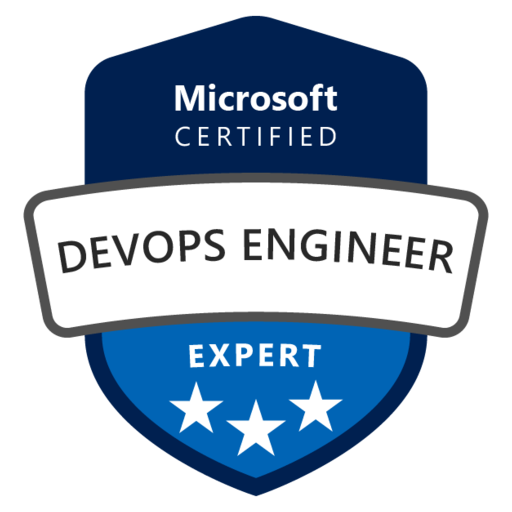We develop a back-end for native (Java/Kotlin, Swift) and cross-platform (Flutter, React Native, Kotlin Multiplatform) applications that will run on different OS and devices like iOS and Android.

Back End Development Company
What Is Back End Development
The back-end is the inner part of a computer system, responsible for storing and manipulating data. It’s the server side of the application, that is not accessed by the user.
A robust back-end work ensures smooth application performance and high load resistance. It’s also a vital synonym for cybersecurity and a necessary premise for future app integrations. Back-end developers in Devox work with a principle of developing a fully scalable server-side.
Back End Development Services We Provide
Let us cover the nuances of Back-End Development for you seamlessly.
-
Mobile App Back-End Development
-
Cloud Back-End Solutions
Switch to cloud infrastructure to scale up and down easily, handle heavy loads, and eliminate latency issues. Let us assist you in migration to public, private, or hybrid clouds. We support AWS, Google Cloud, Azure and other cloud vendors.
-
Web Applications
Whether it’s a large-scale system, web portal, or IoT infrastructure, our team will deliver high-load performance systems with enhanced stability. We will leverage server-side logic and infrastructure to ensure smooth and high platform performance.
Read more -
API Development and Integration
Developing versatile solutions for mobile, web, and other back-end to improve your existing solution and leverage seamless integration with third-party services. Using REST API, GraphQL, WebSocket, Hooks, and EventStreams.
-
Back-end Refactoring
Failing to get optimum app performance? Devox Software can rehaul the entire solution infrastructure, leaving the front end intact. Rebuild existing systems to reduce development, infrastructural and supporting costs, enhancing the code base quality on the way.
-
Custom server development
If you need a close local infrastructure for an internal network, we can develop a custom server exclusively for your company’s needs.
-
Back-end testing
Conducting security and stress testing to trial-run your app’s back-end and evaluate its performance under pressure, resistance to high load or attacks, and overall capacity.
-
Back-end consulting
Let us provide sound guidance into any aspect of back-end development that is relevant for you, help you pick a proper solution, or assist in finding the way to design, develop, optimize, and maintain the back-end components of your software applications.
Our Back End Best Practises
Development Approaches
Devox employs 5 main software development principles: SOLID, DRY (Don’t Repeat Yourself), KISS (Keep It Simple), YAGNI (You Are Gonna Need It), and STEM (Science, Technology, Engineering, Mathematics).
Architectural Patterns
Based on your requirements, our engineers conduct the research to offer an architectural pattern that would work best - monolithic, microservices-based architecture or serverless. Regardless of a pattern you choose, we think out the means of third-party integrations for monolith or the ways microservices will interact.
Infrastructure Design And Selection
During the infrastructure design phase, we employ platforms such as cloud-based solutions, Microsoft's Azure, or Amazon's AWS. Based on the nature of your project and its unique demands, we handpick services that fit today’s needs and anticipate future growth and changes.
CI/CD (Continuous Integration, Continuous Deployment)
CI/CD is a set of practices and tools that streamline the building, testing, and deployment of code changes, ensuring that your back-end application remains reliable, up-to-date, and secure. In Devox, the CI/CD stage includes testing, code quality checks, and deployment of code analyzers that carefully analyze code for any potential inefficiencies or vulnerabilities.
Technologies We Use For Back End Development
We’re making your Back End Development up for scales by design with the modern tech stack. See what we work with.
-
Python
Visit PagePython is an excellent option for big data solutions, data analysis, and predictive modeling. We also recommend using it for machine learning and AI - all thanks to its broad selection of frameworks and libraries.
-
Java
Visit PageLeverage Java capabilities to build big enterprise systems with an extensive infrastructure. As a language, it’s secure and highly compatible. It’s general-purpose, meaning it’s a good choice to write a complicated, scalable and cross-platform solution.
-
Node.Js
Visit PageGo with Node.js to build light and flexible or real-time applications: pick it to make a swift chat bot or chat room, data streaming app, browser game, or server-side web app. Devox’s engineers will help you leverage its non-blocking, event-driven architecture. Node.js is a good back-end choice for quick development and fast idea realization.
-
.NET
Visit PageThis framework is a proper choice for mid- or large-size systems with an extensive workload and a need for quick data processing thanks to its scalability and integrativeness. It’s closely associated with the Microsoft ecosystem, which will enable you to build apps with Azure services.
-
Go
Go is the native language of Ethereum as an ecosystem (not its smart contracts). It’s a good choice for developing blockchain nodes and network-related components thanks to its concurrency support. Additionally, you can create tools for interacting with blockchains.
-
Solidity
Solidity is widely used for Ethereum-based smart contract development. It serves as the basis of reputable Web3 solutions like Uniswap or Compound. Its use cases also include DAOs, stablecoins, DeFi protocols, blockchain oracles, and other Ethereum-based dApps, as it’s essential for Ethereum-based dApps and DeFi applications.
-
Rust
Among back-end technologies, Rust is commonly used for architecting modern L2 blockchains and solutions. It serves as a canvas for Optimistic Ethereum, zkSync, Laminar from Polkadot, and Elrond. Rust is perfect for building blockchain clients, runtime environments, critical components that require low-level control and security and Polkadot-based solutions using Substrate (a framework for Polkadot development).
Why Back End Development Services By Devox?
Lower the infrastructure cost
As pinpoints work faster, requiring fewer resources for operational capacity, the given amount of users can be processed with a cheaper infrastructure with help of Orchestration, Containarization and Load-balancing techniques.
Reach higher application reliability
Reduce downtime and opt for impeccable application work in the future: the Devox developers architect the back-end with future best practices in mind, only using the most relevant tech stack.
Enhance cybersecurity
Let our engineers outfit your platform or application with the strongest and most relevant cybersecurity tools. We're working on encryption procedures, building firewalls (Network/WAFs), improving authentication (MFA/RBAC), setting up IDPS, and upgrading software components.
Strengthen fault tolerance
Reduce database failure along with other technical errors: let us help you switch to microservices architecture or tackle the existing problems with the monolith one.
Stick With Devox
Quality for money
Reach a sacred balance of cost and quality with Devox as your next software development partner. You don’t have to pick between a massive check and low skill - we provide reasonable pricing for a comprehensive technical solution your business will end up benefiting from every day.
Tailoring the proposition
However complex your project, whatever your budget, and whichever requirements you put first, the Devox team will craft the right fit for you. Let us provide a solution that won’t be overcost or overcoded but will be scalable for future growth.
There for you
Our team stays in touch long after deployment: we are there for you to fix bugs, provide updates, scale the system, or simply answer your questions. Once we’ve developed a product for you, we keep up the contact.
Detailed initial consulting
If your team is out of sync concerning the technical nuances of product development, we can help you align and put them on the same page concerning tech deliverables. Let us solve the business tasks by talking technical.
We’ve worked extensively in terms of geography and sector, developing a variety of work — products, services, and experiences — that has taught us that a well-defined visual strategy is key to bring visibility, credibility, and funds to any organisation. Starting in 2017, we decided to plant a tree for each client that we work with.
70
+Successfully completed projects
71
%Devox Software annual growth
100
+Tech specialists on board
82
%Clients with us for more than 2 years


Web 3 White-label PaaS NeoBank
Our client is a blockchain technology firm that has a network of international financial service provider partners. The project is a white-label PaaS ecosystem for neo banking solutions based on the blockchain network.
Additional Info
USA


Bridging MedTech and MarTech for Enhanced Patient Engagement
Nabed is a SaaS platform at the crossroads of MedTech and MarTech. It enables caregivers to engage with patients using comprehensive, personalized educational content for better healthcare outcomes.
Additional Info
Lebanon


Comprehensive Learning Management System
SwissMentor is a learning management system (LMS). It’s the software for managing all sides of the educational process: the main features include course management, invoicing, room management, document management, and e-learning.
Additional Info
- .NET Core
- PostgreSQL
- Angular
- Docker
- Kubernetes
- Azure
- SCORM
Switzerland
and over 200 our featured partners and clients
Industry Contribution Awards & Certifications
Check Devox Software Awards on rating & review platforms among top software development companies and Certifications our team members holds.
- Awards
- Certifications
Testimonials
F.A.Q.
-
What’s the difference between front-end and back-end?
Back-end is the inner side of the website and application: this term encompasses servers, database, application logic and APIs, is the behind-the-scenes part of an application that manages data, logic, and interactions that occur on the server, which is also why it’s called server-side.
Front-end is the user interface: it’s the UI/UX design and the view the user directly interacts with. It’s also called client-side and includes user interface (UI), user experience (UX), and front-end technologies (JavaScript, HTML, CSS).
-
How does back-end development integrate with front-end features?
Back-end development provides the necessary data and functionality to the front-end. It involves creating APIs, managing database interactions, and implementing server-side logic that allows the front-end to display dynamic content, process user inputs, and offer interactive features.
-
How long does back-end development take?
Back-end development services differ for each case, which accordingly impacts the timeline. Depending on a project complexity, scope of work and team size, it may take less or more time. To get a precise estimation, get in touch with Devox’s managers.
-
How fast can I hire a back-end developer from Devox?
The timeline for hiring a back-end developer always depends on the candidates’ amount and capacity on the market as well as the search location. However, Devox will present the first candidates for your consideration within a week after getting a request.
-
What is the best language for back-end development?
Each project requires a unique combination of back-end technologies. Therefore, there are no universal back-end languages. Among the most popular options for server-side development are Python, Java, Node.js, .NET, Go, Solidity and Rust. No matter the language, we match your project with the most suitable tech stacks that enable higher development speed, scalability options, and application responsiveness.
-
Why is the back-end needed?
Server-side is necessary for storing and organizing data, app hosting, and enhanced security. It also communicates with the front-end, making sure the data is displayed as intended.
-
What are the 3 parts of back-end development?
The back-end refers to any functionality needed to handle the request and deliver the response to the user. This functionality usually comprises:
- The server. It provides data on request.
- The app. It is the application running on the server that channels the data.
- The database. This part stores and handles data.
-
Can back-end development improve website performance?
Yes, back-end development plays a crucial role in enhancing website performance. By optimizing server-side operations, databases, and application logic, back-end development ensures faster loading times, efficient data processing, and overall improved user experience.
-
Is back-end development secure?
Back-end development prioritizes security to protect data and prevent unauthorized access. Implementing robust authentication protocols, data encryption, secure APIs, and regular security audits are some ways back-end development ensures high levels of security.
-
What are the ongoing maintenance requirements for back-end systems?
Ongoing maintenance for back-end systems includes regular updates to software and libraries, security patches, server monitoring, performance optimization, and scaling solutions as user base and data grow. This ensures the system remains efficient, secure, and capable of handling increased loads.
Schedule a Meeting to Discuss Your Goals
Well contact you within a couple of hours to schedule a meeting to discuss your goals.
Let's discuss your project!
Share the details of your project – like scope or business challenges. Our team will carefully study them and then we’ll figure out the next move together.
Thank You for Contacting Us!
We appreciate you reaching out. Your message has been received, and a member of our team will get back to you within 24 hours.
In the meantime, feel free to follow our social.


















































